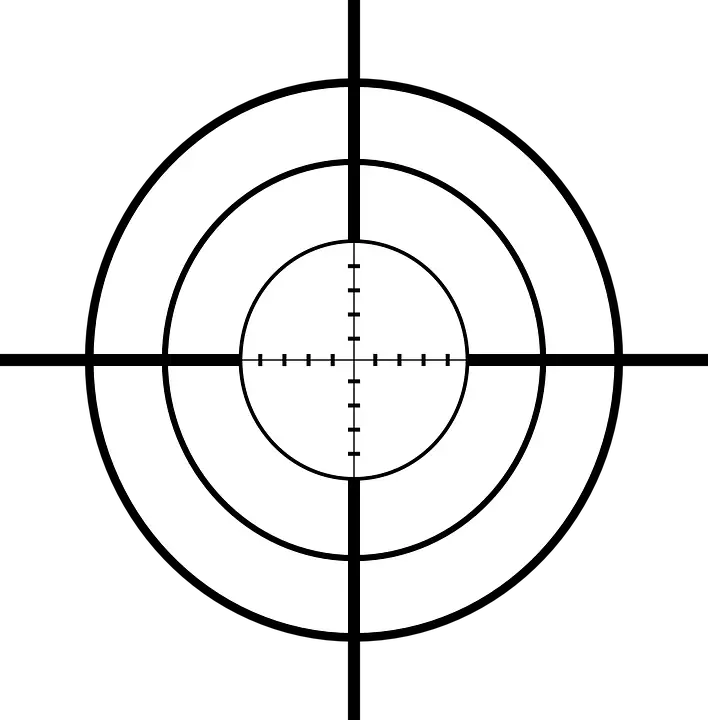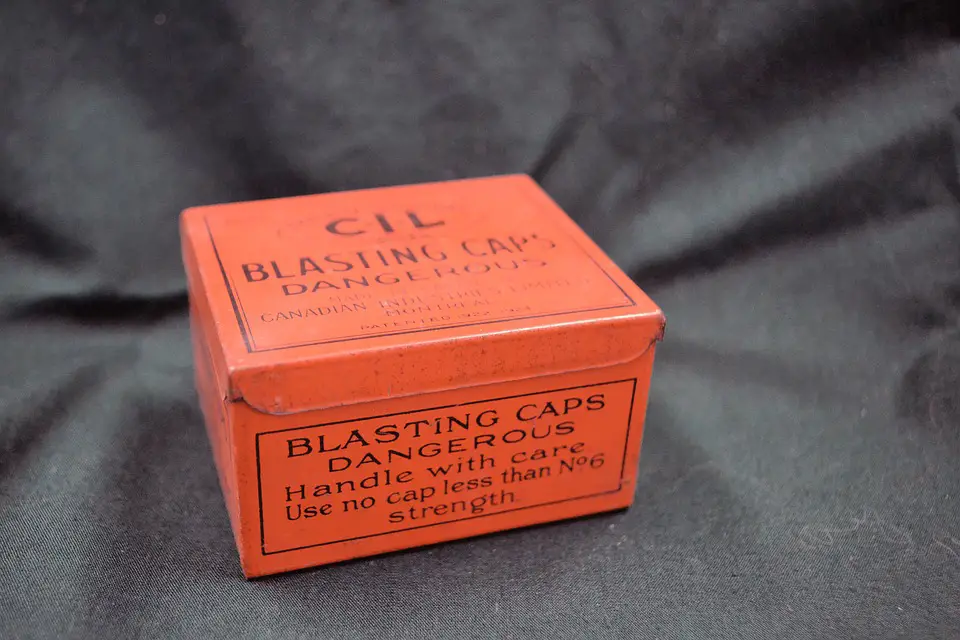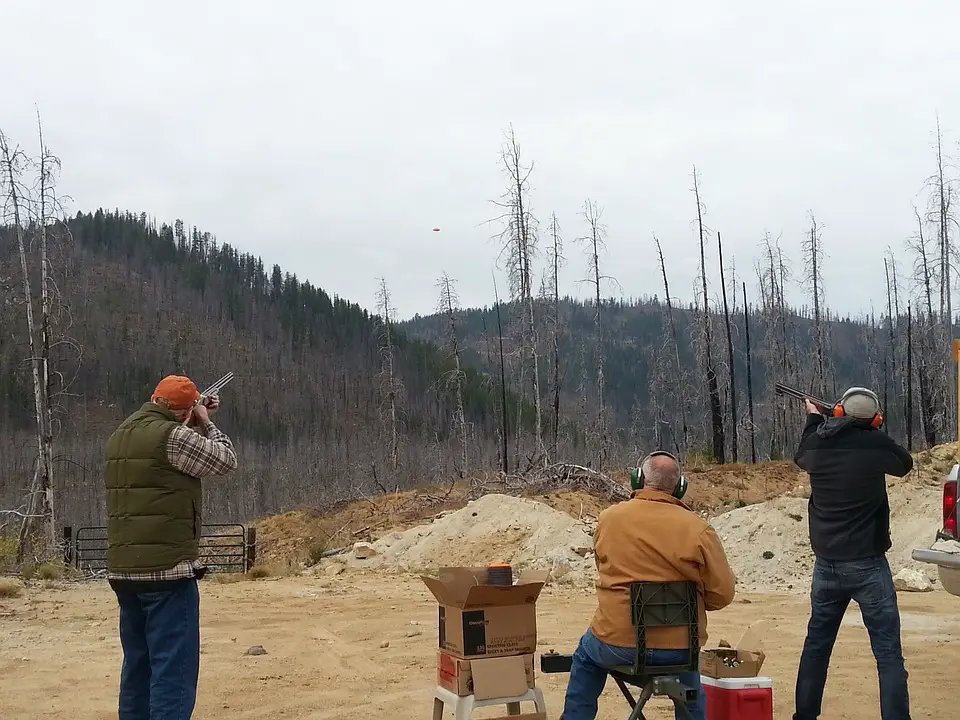
It is a truth universally acknowledged that skeet shooting rules. When I was in college, I visited a friend’s family for Thanksgiving. After suffering through a preordained Detroit Lions loss, we went out back for some skeet shooting.
Maybe it was the vaguely aristocratic flair of shouting “PULL!” to signal a clay pigeons’ release (I really felt like the crazy British hunter in Jumanji). Or maybe it was the thrill of actually hitting the target (for once).
No matter what you like about it, skeet shooting offers many different opportunities for fun. But if you’re a beginner, there are a couple of things you’ll want to know first.

In short, skeet shooting started as a marksman’s game. You spring targets (referred to as “clay pigeons”) into the air, and try to shoot them down. If you will, just imagine low-resolution hunting, and you’re halfway to knowing skeet shooting rules.
What’s more, the game was developed specifically with hunters in mind.
In 1915, William Foster developed the sport for informal shooting practice. Even though trap shooting had existed since 1825, Foster’s idea became so popular that in 1979, the U.S. would have a national shooting team at the Olympics.
And skeet shooting has evolved from its humble origins. Today, the Olympics has 15 events related to shooting. It’s even gotten a boost among women, thanks to shooter Margaret Murdock. Murdock won a silver medal in 1976 for three-position rifle. She was also the first markswoman to ever win an Olympic medal.
Murdock’s performance paved the way for other female athletes in the sport.
As previously mentioned, trap shooting long predates skeet shooting, starting sometime in the 1700s. And though the two sports are closely related, it doesn’t mean they’re the same.
Basically, trap shooting is a more straightforward kind of experience if that’s what you’re going for. The lack of changes gives you an opportunity to really hone your ability as a marksman hitting predictable targets.
By contrast, skeet shooting is a slightly more competitive and driven kind of experience. It’s designed to display shooters’ abilities, rather than designed to help them cultivate them.
If you’re a beginner looking to hop into the world of skeet shooting, you couldn’t have picked a better time. According to Time, the sport is only growing in popularity, with some gun advocacy groups helping to spread it.
According to the article, high schoolers are hosting big tournaments, like the Minnesota State High School Clay Target League championship. The event considers itself the biggest shooting sports event in the world.
With so many young people participating in the sport, it’s growth seems inevitable, especially as they become working adults who can afford more equipment.

The National Skeet Association (NSSA) is the regulating body in charge of the sport of skeet in the United States.Basically, the agency is in charge of everything that happens with skeet. According to its website, the group also handles shooter classification, tournament pay-outs, and shooting safety practices.Predictably, they’re also in charge of skeet shooting rules, which are spelled out in the bylaws. The NSSA’s bylaws are largely housekeeping, dealing with the internal politics of the organization.The housekeeping covers things like member meetings, dues, voting, and what it means to be a member in good standing. It also various positions of authority within the organization, including presidents and vice presidents, treasurers, and assistants.
Before we go on, it’s important to note that skeet has many varieties, and therefore many rules. Olympic, NSSA, and English skeet shooting all differ from each other. So it’s important to properly research the one you’ll be playing.For the most part, we’ll be discussing the NSSA’s rules when it comes to skeet.
The NSSA’s rules are specific and comprehensive, down to the field layout, the size of the targets, and type of ammunition allowed.
According to the rule book, targets are required to be of “good quality” and not to be more than “four and five-sixteenth (4-5/16) inches in diameter nor more than one and one-eighth (1-1/8) inches in height shall be used.”
That’s a kind of rule you can expect from a sport about precision.
The rule book also features a handy chart on the upper limits of allowable ammunition, in general you do not want to show up with hunting ammo. You don’t want to shoot anything larger than 7 shot, 8 shot is a really good choice.
Gun clubs are allowed to use what’s called alternate shot (something other than lead), but it must meet industry standards for “target load” minimums, meaning the shot is heavy enough.
The rules state that if you use heavier gauges than the ones prescribed by the rulebook during an event, you risk them negating your score for that event.
The NSSA skeet shooting rules actually painstakingly describes the recommended layout of the course in its rule book, complete with diagrams. Here is a video that will show you that diagram in 3D.
Everything seems down to a science. However, the rule book does stipulate that the NSSA will, under no circumstances, entertain claims of unfairness based on irregularities in field layouts.
So that means that it’s in your best interest to get to know each field individually because no two fields are the same.

If you’re starting out, finding the right gun can be complicated. However, it becomes a little less so once you zero in on what you want to accomplish.Intimately (or even vaguely) understanding what you want out of your experience will help you immensely. But we have some suggestions, too!
This is best for the shooter that doesn’t like a lot of trouble. Therefore, single-shot shotguns can be a great choice for beginners.
All you have to do to break it open is pull a lever or press a button, and the simplicity helps novices who don’t need to be distracted by high tech yet.
Single-shots are also versatile, meaning you can use them for skeet shooting, but also for hunting. If money is an important consideration for you, doubling up on uses can be economic. Further, many skeet shooters are hobbyists and amateurs, so you don’t always need the best equipment just to play.
The downsides of having a single shooter are wrapped up in the name itself. With just one shot, you will spend more time reloading. If you’re looking to fire off repeatedly, this won’t be the best option for you.
A better gun for skeet shooting (and also a bigger investment) is a pump-action rifle. A pump-action can pack a lot of heat, meaning that beginners or those of small stature should consider the gauge before buying. It will take time to get used to recoil.
You also have some options over your choke, the mechanism that controls the density and spread of the shotgun pellets. Think of it like the nozzle on a spray bottle. If you want distance, turn it to “stream.” If you want coverage, turn it to “mist.” And if you want something in-between, you have options for that, too.
We recommend going with a modified choke for skeet or trap shooting. It allows you to stay in the action, while giving you enough accuracy to hit your targets.
These shotguns are for when you want to take it up a notch.
Reliable and practical, semi-automatic guns are popular mainly because of their firing rate. You won’t be struggling like you will with a single-shot.
A quality model for this kind of gun includes the Stoeger M3500, on account of its excellent, inertia-driven system (as opposed to gas). Lever-action guns are heavier but provide lighter recoil. They fire faster but they also jam easier. And many of them can also double up as a gun for hunting.
Other models include the Remington 1100 Competition, the Mossberg 930 series, and the Beretta A300 or Beretta A400.

If your brain is buzzing from all this new knowledge about skeet shooting, you’re not alone. Learning the ropes can be hard at first. However, you’ll get off to a good start if you remember some basic tips:
This is something you’ll hear a thousand times, and it’s still not enough — safety first. No matter what you’re doing, be it skeet, trap shooting, or hunting, a gun is a formidable and deadly weapon.
If you don’t treat it with respect, people can get hurt, including yourself. Therefore, your number one obligation is to follow skeet shooting rules and safety procedures on and off the field (like ear protection).
Mounting is how you pick up the gun and get it into position. Inexperience shooters can have a hard time immediately finding their comfort spot for shooting.
Doing this in front of a mirror (with the gun unloaded) can help, and you can see how you may repeat problem stances. Eventually, your gun should mount at the same position every time, and avoid mounting on your shoulder.
Here is where skeet shooting rules also offer a life lesson: analyze your missed shots. By taking careful note of when you miss, the conditions, your posture, etc., you can learn and grow into a better marksperson.
Learning that you slump a shoulder or tense up before shooting can be critical to changing your form. And by keeping track of missed opportunities, you’ll get better at reducing them.
This is never a bad strategy. Other shooters know tricks of the trade that you’ll find invaluable as a novice. Speaking to other players at shoots and behind the scenes is good practice.
You could ask them about arcane skeet shooting rules, the guns they own, and which ones they prefer for different activities. They’ll probably be happy to speak with you!
Ultimately, no one can tell you what your time skeet shooting will be like. But it’s important to remember that skeet shooting is a sport! Try to be social with other shooters and enjoy developing your skill as a marksperson.Choosing the right gun and learning all of the rules is crucial, but so is having fun. And if you take the time to develop a passion for skeet shooting, it might just blow you away.Have you had experiences skeet shooting? Tell us all about it in the comments below!Feature image: CC by 2.0, by Jon Collier, via Flickr